Hi! My name is Kardelen. I primarily write about the Ottoman Era, which is my field of expertise, as well as the medieval period. Nevertheless, today's topic is one of the most controversial women in history, Marie Antoinette.
Things you will see in this article:
1. From Austria to the French Palace: Marriage and a New Beginning
2. Being a Queen and Living a Luxurious Life
3. The French Revolution and Her Death
I was a queen, and you took away my crown, a wife, and you killed my husband, a mother, and you deprived me of my children. My blood alone remains: take it, but do not make me suffer long. - Marie Antoinette
1. From Austria to the French Palace: Marriage and a New Beginning: Vienna, November 2, 1755. The labor was difficult, but she was born perfectly healthy by around seven-thirty in the evening. The next day, she was baptized Maria Antonia Josephina Johanna. As was tradition for all archduchesses, she was given the first name Maria but was typically called by her second name. Her mother, Maria Theresa, would often refer to her as Antonia. It was the French, however, who would know her as Marie Antoinette.
Marie Antoinette's mother, Maria Theresa, was the Empress of Austria and the ruler of the Habsburg monarchy. Her father was Holy Roman Emperor Francis I. Theresa must be at least as unfortunate as her daughter is, two months after she acceded to the throne, she had to face the invasion of one of her provinces and confront a European coalition. “I am but a poor queen, but I have the heart of a king,” she said. She then devoted herself entirely to ensuring her empire’s independence and security.
Marie Antoinette was not the direct heir to the throne, but she grew up together with other members of the family. She received a very strict education at the Austrian palace. She was mainly educated in subjects such as art, literature, and music. In addition, he was also entering into social relations with prominent people of the Austrian Empire. However, a striking point in her education was that she was directed to ‘‘traditional women's education’’ rather than responsibilities such as management or political issues. This training was aimed at her taking on more of a role as a wife, mother, and a figure in the family.
One of the most significant turning points in Marie Antoinette’s life was her strategic marriage in the context of the Austria-France relations. The Austrian government planned to marry the 15-year-old princess to King Louis XVI of France to strengthen the alliance between Austria and France. This marriage was part of the broader political landscape of the major European monarchies. Her mother, Maria Theresa, made sure that Marie Antoinette received all the necessary education to become the Queen of France, but her marriage was her first major test in life.
Thus, on April 19, 1770, in Vienna, she married in absentia (per procurationem) her future wife Louis-Auguste at a wedding. Maximillian, Marie Antoinette's brother, represented the groom at the wedding. The purpose of this groom-less wedding was to ensure that Marie Antoinette entered France as the Dauphine of France, not the archduchess of Austria. That way, it would be easier for the French people to adopt her. Two days later, she left Vienna crying. Her mother said, ‘‘Goodbye, dear daughter. Be so good to the French people that they will say he sent us an angel,’’ she said. On May 7, she crossed the border in French clothes as ‘‘Dauphine Marie Antoinette,’’ leaving behind all her Austrian servants, clothes, and even friends as a symbol of loyalty. She attended a thanksgiving dinner held in her honor in the city of Strasbourg. The whole city was decorated with flowers and lights in her honor. After a stay of a few days, she set out for the Palace of Versailles.
2. Being a Queen and Living a Luxurious Life: Marie Antoinette, who came to France from Austria in 1770 at the age of 14, was not fluent in the French language and was faced with some kind of cultural confusion. She was raised according to aristocratic rules and protocols in the palace in Vienna. However, the lack of knowledge in her education, especially about the culture of France and the traditions of the French court, was one of the biggest difficulties before marriage. The young princess began to learn the French language and studied French culture for several years to be able to behave by the rules of life in the French palace. However, Marie Antoinette's adaptation to French culture would not be easy. Initially, she would struggle with the language barrier and the protocols at the French palace.
With Marie Antoinette's arrival in France, the wedding preparations quickly began. At the Palace of Versailles, she met her father-in-law, Louis XV, and other members of the royal family. Her future husband, Louis-Auguste, the Dauphin, was very shy. He was only a year older than Marie Antoinette and had not yet been introduced to romance or sexuality.
Before the wedding, Marie Antoinette was presented with a magnificent jewelry collection, which traditionally belonged to the French dauphine. Many of the jewelry belonged to previous queens and had a total value of 2 million livres (approximately 625 kg. gold). In addition, a wedding dress decorated with diamonds and pearls had been prepared. In the summer of 1770, on May 16, a very large ceremony and a spectacular wedding were held. After the ceremony, the groom, who was gorging at the meal, said to the king, who warned him to eat less, ‘‘Why is that? I sleep much better when my stomach is full,’’ he replied. The couple were then taken to the bedroom, which was blessed by the archbishop of Reims. “Nothing,” the Dauphin wrote in his journal for the day of May 16. The fact is nothing had happened during that wedding night. The Dauphine soon confided to her dear Abbé de Vermond that the Prince had not kissed her once or so much as held her hand. (Marie Antoinette: The Last Queen of France - Evelyne Lever)
Marie Antoinette was given a large amount of jewelry and gifts. The magnificence of the palace and the large expenses had created a great controversy among the people.
Wedding Gifts: On their wedding day - 16 May 1770 - the ceremony took place in the morning. In the afternoon, the new Dauphine of France (M. le Dauphin (Monsieur le Dauphin), the title of ‘‘Dauphin’’ in the French monarchy, was the title borne by the heir to the King of France. This title was usually given to the next heir to the throne.) was taken to her official chambers, where she was presented with gifts from her new grandfather-in-law.
A gorgeously carved cabinet was presented, which was filled to the brim with priceless jewelry and precious stones. The cabinet itself was a worthy present. It stands (for it still occupies a place in the queen's bedchamber) 1,83 cm tall and has a width of 1,07 cm; the lining is of red velvet. The marvelous piece was the result of the combined effort of Bélanger, Bocciardi, Evalde, and Gouthière. The Duc d'Aumont had found the architect Bélanger, who built the piece of furniture, but the Duc did not count on the expense. He had specifically stated that the piece was not to exceed 8.000 lives - however, the finished product amounted to 22.653 livres - or around 1.000.000 euros. (The cabinet would be sold off in 1790 by the National Assembly.) - (Worthy of a Queen: Marie Antoinette's Bridal Gifts - https://thisisversaillesmadame.blogspot.com/)
The contents of the dauphine's new cabinet were not all meant for her. She was expected to distribute the abundance of snuff-boxes, watches, cases of gold and enamel (adorned with diamonds), jewelry, scissors, golden flacons, and perfume bottles. These were duly given by the bride to her attendants and were kept by them as a momentum of the day. Besides these, some paintings, dinnerware, vases, bed linen, dresses and clothes, brooches, crowns, and precious stones were also presented to the young couple. The cost of the dauphine's wedding presents was of a truly royal proportion. A total of 162.576 livres was spent by the jewelers, watchmakers, and craftsmen - estimated as 8 million euros or 7,4 million pounds.
Marie Antoinette and her mother, Maria Theresa, corresponded constantly throughout their lives. Here’s a letter from daughter to mother: https://sourcebooks.fordham.edu/mod/1773marieantonette.asp
Other letters written by Marie Antoinette: https://teaattrianon.forumotion.com/t178-marie-antoinette-s-letters
On May 10, 1774, after King Louis XV died suddenly of smallpox, the lives of Louis-Auguste and Marie Antoinette changed completely. The courtiers of the new king, Louis XVI, competed to offer their allegiance to him and Queen Marie Antoinette. The new king and queen knelt and prayed to God. According to one account, Louis said, ‘‘Almighty God, guide us and protect us. We are still too young to lead the country.’’ The queen was nineteen, and the king was twenty.
XVI. Louis' coronation took place in Reims at the time when the bread shortage in Paris was reaching its peak. It was said at this time, ‘‘If they can't find bread, let them eat cake!’’ (‘‘Qu'ils mangent de la brioche.’’) the word was attributed to Marie Antoinette, either to vilify Marie Antoinette or to make the word popular. There is no evidence that it was said by her. When Marie Antoinette heard about the bread shortage, she wrote, ‘‘The more I see these people who are so kind to us despite their own misfortune, I definitely think we should work harder for their happiness. The king also sees this fact. To speak for myself, I will not forget the day I was crowned - even if I live a hundred years- for the rest of my life.’’
Marie Antoinette was unable to get pregnant during the first seven years of her marriage. This caused rumors to spread that Louis-Auguste was impotent or suffering from the disorder of phimosis. He had a small operation - and a year later - their first child - Anne Marie - was born. In the meantime, they faced accusations that this marriage was a decoy, a fake marriage. Other than that, her daily life was very boring. She got out of bed every day with the help of the servants and was dressed by the servants. She was accompanying her husband to public dinners, which anyone who complied with the dress code could attend. From this situation, she told her mother, ‘‘I put on my lipstick in front of the whole world, I wash my hands in front of the whole world!’’ she complained, saying. Overwhelmed by boredom, the everyday conversations around Marie Antoinette's circle of friends were far from intellectual. These shallow conversations were relieving the boredom a little bit. Because the topics she talked about with her close circle of friends, according to her assistant Madame Campan, consisted of songs from a new comedy, witty sayings of the day, the choicest scandals, and gossip. A serious and level conversation seemed almost forbidden for Marie Antoinette.
As a result of Count Artois’ (brother-in-law) influence, she began to go to operas in Paris in disguise. This led to the spread of rumors that the queen had secret lovers and went to meet them. She started spending more and more money every day. She had not the slightest idea of the real value of money. She was buying new clothes and expensive diamonds, gambling at every opportunity. On her twenty-first birthday, she had a gambling party that lasted three days and three nights. During this time, there was no account for the money that changed hands. She began to spend most of her time at the Chateau Le Petit Trianon, which was located on the palace grounds rather than the palace. There was no end to the expenses she spent on redecorating the castle and its garden.
There were rumors spread by a group of people, likely seeking revenge, claiming that the queen had an affair with her brother-in-law, Charles (Count of Artois). Pirate printers in Paris began to publish magazines depicting the queen and Artois as lovers committing adultery. The first publication to make such allegations was called Les Amours de Charlot et Antoinette. Another magazine, L’Autrichienne en Goguette, depicted the queen and Artois engaging in intimate relations in one of the palace's salons. Le Godmiché Royal showed the queen in a compromising and inappropriate act. Other publications went further, alleging that the queen had relationships with animals and suggesting she was a lesbian. Although no evidence was ever provided to support these claims, the queen’s popularity among the public began to erode.
Meanwhile, France was grappling with even more significant problems. The country's economy was on the brink of collapse. The wars during the reigns of Louis XIV and Louis XV had left France with enormous debt, making it the most indebted nation in Europe. The French people were already burdened by relatively low taxes, and the portion of taxes that were collected could not save the economy. Pierre-Augustin Caron de Beaumarchais convinced King Louis XVI to support the American colonists in their fight for independence against the British. This decision proved disastrous for France, as the cost of such support was immense, further exacerbating the country’s financial crisis.
About her children: Her first child was a girl and was baptized with the name Marie Thérèse Charlotte (1778). She was given the title ‘‘Dauphine’’ due to her being the eldest daughter of the king of France. Although the palace and the public wanted a boy, Marie Antoinette was very pleased to have a girl. She said to the baby, ‘‘If you were a man, you would belong to the state, but you belong to me, and you will have all my care; you will share my happiness and reduce my suffering.’’ In the following years, the crown princess was followed by three siblings: Prince Louis Joseph (1781), Louis Charles (1785) and Sophie Béatrix (1786).
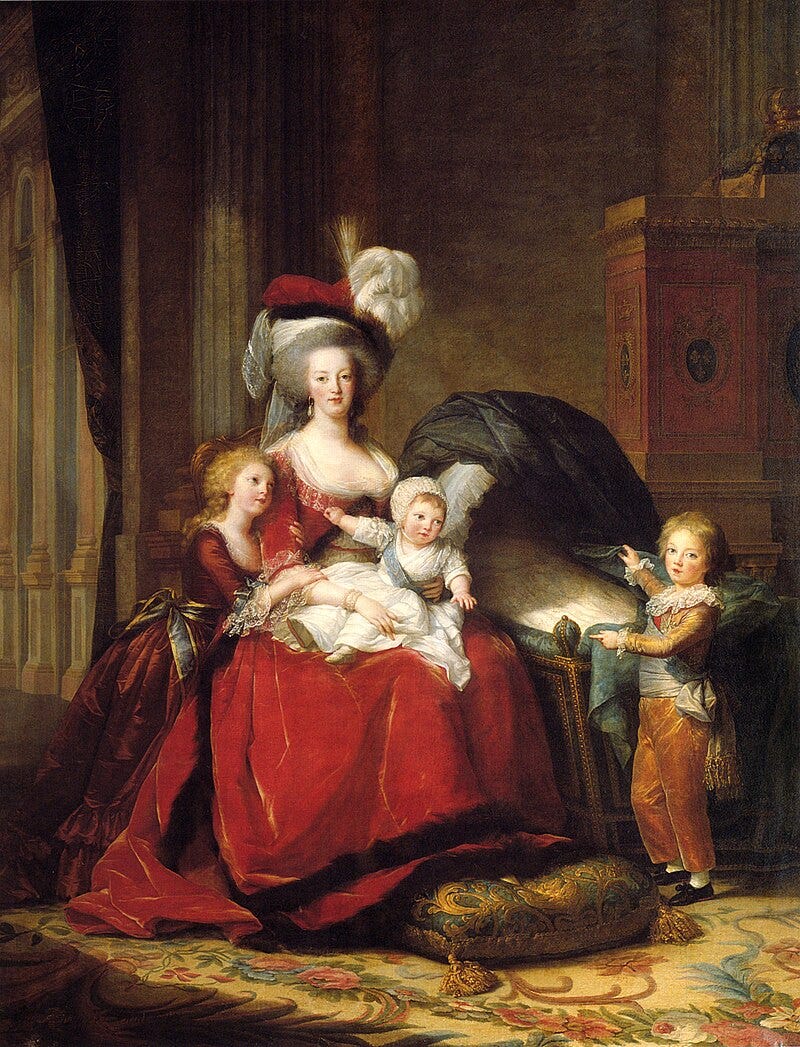
The famous diamond necklace incident: Louis de Rohan, one of France's most prominent families, had a strained relationship with Queen Marie Antoinette. Previously serving as Austria’s ambassador, Rohan had written letters boasting about his affairs with Austrian women, including claims about Marie Antoinette’s mother, Empress Maria Theresa, begging him to sleep with her. He also showed scandalous magazines that tarnished Marie Antoinette’s reputation. Ambitious to follow in Cardinal Richelieu's footsteps and become France’s prime minister, Rohan knew he had to mend his relationship with the queen, as such a position could only be granted by the king or queen, and Marie Antoinette continuously blocked his path.
Jeanne de la Motte, a disgraced aristocrat, realized Rohan’s desperation and devised a clever plan to exploit it for her own gain. She became his mistress and manipulated the situation to her advantage, seeking to secure a small fortune for herself. Countess de la Motte convinced Cardinal Rohan that she was a close confidante of Queen Marie Antoinette. She told him that the queen secretly desired the diamond necklace. Believing that he was helping the queen, the cardinal gave the countess some money, agreeing to pay for the necklace in installments. The royal jeweler, trusting the payment would come later, handed over the 1.6 million livre necklace (equivalent to 500 kg of gold or 93 million dollars in 2006).
After Jeanne de la Motte delivered the necklace to the palace, she attempted to sell it to other buyers without being the rightful owner. However, since the payment was not made and the matter was linked to the royal treasury, the situation was soon uncovered. The lack of payment raised suspicion, and the fraud was revealed. Marie Antoinette did not wish to purchase the magnificent diamond necklace that the royal jeweler had made for her. Her reason was its exorbitant cost and the pressing financial needs of the royal navy. When the jeweler insisted, she scolded him with the words: ‘‘I did not order any jewelry from you, and moreover, I have repeatedly stated that I do not want to add another carat to my diamond collection. When I refused to buy it, the king wanted to purchase it, but I made it clear that I would not accept it as a gift either. Please do not ask me again’’ In fact, due to the stress caused by this event, the queen went into early labor and gave birth to her second daughter a few weeks prematurely.
Many people were arrested in connection with the incident. Cardinal Rohan was acquitted, while Countess de la Motte was flogged, branded, and thrown into a house of correction for prostitutes. Her husband was sentenced to forced labor in absentia. Although Marie Antoinette insisted that she had no involvement in the scandal, she could not prevent her image from being further tarnished in the eyes of the public. This event reinforced the belief in the corruption of the monarchy, contributing to the growing unrest that eventually led to the French Revolution.
3. The French Revolution and Her Death: As if the political disaster caused by the diamond necklace affair wasn't enough, in 1787, Marie Antoinette's youngest daughter, Sophie-Béatrix, passed away. Devastated by the news, the queen clung to the lifeless body of her baby and cried for hours. Soon after, royal doctors informed her that her eldest son, Louis-Joséph, was in the final stages of tuberculosis. In her agony, Marie Antoinette never left her dying son’s side and personally cared for him until his death.
Meanwhile, due to insufficient taxation and the endless wars outside the country, the French government was burdened with a massive debt. The king called a meeting with the nobility to discuss the gravity of the situation. However, the ‘‘Assembly of the Nobles,’’ as it was known, yielded no results. Left with no other option, King Louis XVI convened the Estates-General in 1789. The Estates-General was a representative assembly of the French people, the last of which had been convened by King Louis XIII in 1614. From the very first day of the meeting, the assembly began to clamor for reforms and criticized the monarchy and its policies.
But the royal family’s attention diverted elsewhere. The heir died on July 4 at the age of just seven. The king began to suffer from clinical depression, and the queen was deeply saddened. Without delay, Marie Antoinette’s enemies spread rumors that she had poisoned her son.
Marie Antoinette began to suspect that reformists were plotting to abolish the monarchy. On July 14, 1789, a large crowd in Paris marched toward the Bastille, a symbol of royal authority, and took control of the prison. The prison governor and two far-right politicians were lynched. The news didn’t reach the Palace of Versailles until midnight. When King Louis XVI heard of the events, he asked, ‘‘Is this a rebellion?’’ To which the Duke of Rochefoucauld-Liancourt replied, ‘‘No, sire, this is a revolution.’’ Panic broke out at the palace, and many of the court members fled to save their lives. Count d'Artois, fearing assassination, escaped abroad. Marie Antoinette’s friend and head governess of her children, Countess Gabrielle de Polastron, fled to Switzerland, continuing to correspond with the queen. Marie Antoinette appointed the Marquise de Tourzel, Louise-Elizabeth, as the new head governess. Her surviving children were Princess Marie-Thérèse-Charlotte and the new Dauphin, Louis Charles. The queen also wished to distance herself from the palace. With so many problems, staying so close to Paris seemed unwise. She hoped the king would order a move to another château, such as Saint-Cloud or Compiègne. She had even packed her stuff, but the king insisted they would not move. Unable to oppose her husband, Marie Antoinette could not bring herself to leave him behind.
Rumors had spread that the palace members were hoarding all the grain in the city’s stores. News of a large group marching toward the Palace of Versailles reached the court months later. On November 5, upon hearing the grim news, Marie Antoinette once again insisted on leaving the palace, but the king refused.
Knowing that she was the most disliked person at the palace, Marie Antoinette decided to spend the night separate from her husband. She ordered her head governess, the Marquise de Tourzel, to take the children to the king immediately in case of any danger. In the early hours of the morning, the crowd broke into the palace. They massacred the queen’s guards, and Marie Antoinette and her attendants narrowly escaped with their lives. They took refuge in the king’s bedroom in the heart of the palace, where Princess Elisabeth (the king’s sister) was also present. Once the children arrived, the doors were locked.
Meanwhile, the crowd gathered in the palace courtyard, demanding that the queen appear on the balcony. Marie Antoinette stepped out in her nightgown with her two children by her side. The crowd asked her to send the children inside. For about ten minutes, she stood alone on the balcony, with weapons pointed at her. Eventually, she nodded to the crowd and entered the palace. Some in the crowd, admiring her courage, shouted, ‘‘Vive la Reine!’’ (‘‘Long live the Queen’’). Then, the royal family was forced to return to Paris and taken to the Tuileries Palace, which had been abandoned since Louis XIV. Marquis Gilbert du Motier, a liberal aristocrat who had fought alongside George Washington, was put in charge of their security. Upon meeting the queen, he bluntly stated, ‘‘Your Majesty is now a prisoner. Yes, indeed. Without her ‘Guard of Honor,’ the queen is a prisoner.’’
Louis XVI was arrested by republicans on August 13, and about a month later, on September 21, the National Convention abolished the monarchy. The royal family, including the children and Princess Elisabeth, were imprisoned in the Temple Fortress in Paris. Strict security measures were put in place to prevent royalist supporters from attempting to rescue them. Following the imprisonment of the royal family, Paris became a center of violence. The rebels occupied the prisons and massacred anyone they suspected of being pro-royal. Princess Lamballe, Marie Antoinette’s much-loved friend, was captured and asked to renounce her oath of allegiance to the queen. When she refused, she was repeatedly hit on the head with a hammer and killed. According to some sources, she was dismembered, her head impaled, and brought in front of Marie Antoinette’s window. Marie Antoinette, who saw this terrible sight, fainted with sickness.
Louis was tried for treason on December 11 and sentenced to death on January 17. He was allowed one last meal with his family. Louis advised his young son not to seek revenge. After the meal, Marie Antoinette spent the following hours holding her husband and son. The next day, Louis was executed by guillotine. Upon hearing the cheers of the crowd, Marie Antoinette collapsed, unable to speak for a long time.
On the night of July 3, 1793, a group of government officials arrived to take Marie Antoinette’s son. The young heir, who had been declared Louis XVII by royalists in exile, was to be kept in a separate location by the republican government. Louis, hysterically crying, hid behind his mother, and Marie Antoinette, acting as a shield, refused to surrender him to the authorities for two hours. Finally, after being threatened with the execution of Marie Thérèse, she had to give in. Soon after, Marie Antoinette’s trial began. Two years later, in 1795, little Louis died in prison.
On August 2, 1793, Marie Antoinette was awakened by guards and told to get dressed. She was separated from her daughter and sister-in-law and transferred to the Conciergerie Prison. On September 2, republican politician and journalist Jacques Hébert told the Committee of Public Safety, ‘‘I promised Antoinette’s head. If this is delayed, I’ll cut it off myself.’’ Many republicans had begun to hate Marie Antoinette intensely and were determined to see her dead. Her trial began on October 14. When she entered the courtroom, everyone was shocked. She appeared gaunt, frail, and devastated, having aged rapidly. The prosecution called forty witnesses to testify. The diamond necklace affair and accusations that she had intoxicated the Swedish Guards during the siege of the palace were brought up. The most horrifying accusation came from Hébert, who accused the queen of sexually abusing her son. Marie Antoinette remained silent, and when pressed for a response, she said, ‘‘If I did not respond, it is because such an accusation made against a mother is something that even nature itself cannot answer.’’
The jury unanimously found Marie Antoinette guilty and sentenced her to death on October 15, 1793, for treason. She was returned to the Conciergerie Prison. She wrote her final letter, known as the ‘‘Testament,’’ to her sister-in-law, Elisabeth. In this letter, she expressed her love for her family and friends and pleaded with her children not to seek revenge. It is said that upon learning of her death sentence on October 15, 1793, her hair turned white overnight due to the shock.
On the morning of October 16, 1793, a guard came to cut her hair and bind her hands behind her back. She was driven through the streets of Paris for over an hour in a simple, horse-drawn cart, making her way to the Place de la Révolution (now Place de la Concorde). She slowly stepped out of the cart and glanced at the guillotine. A priest accompanying her whispered, ‘‘This is the moment, madam when you must summon your courage.’’ Marie Antoinette smiled at him and replied, ‘‘Courage? The moment when all my suffering will end is not the moment when my courage will fail me.’’
According to a rumor, she later stepped on the executioner's foot and said, ‘‘I’m sorry, monsieur, it was unintentional.’’ As a punishment for mocking him, she was stripped naked before her execution.
Marie Antoinette was executed at 12:15 PM on October 16, 1793. After her beheading, her head was raised and shown to the screaming crowd.
‘‘I have seen all, I have heard all, I have forgotten all.’’ -Queen consort of France, Marie
That’s it. I will continue sharing new articles about the Ottoman Era, the medieval era, and general history. Readers’ opinions are always welcomed, Take care!
Kardelen

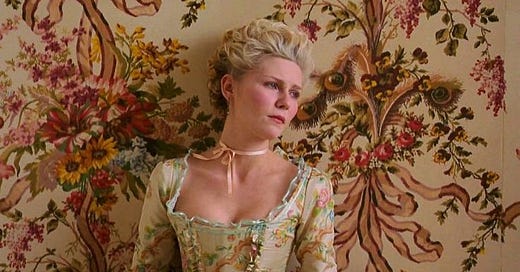


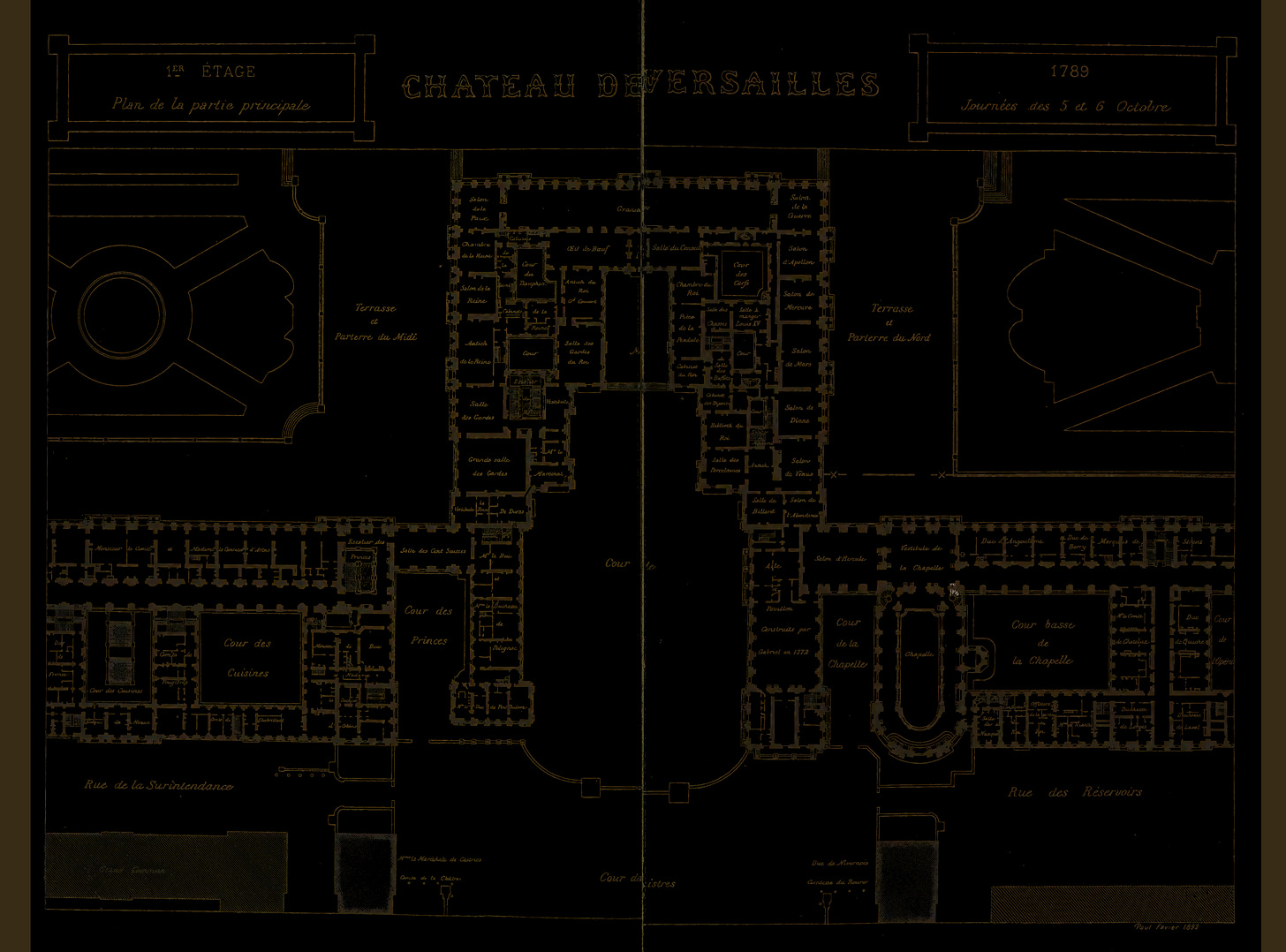
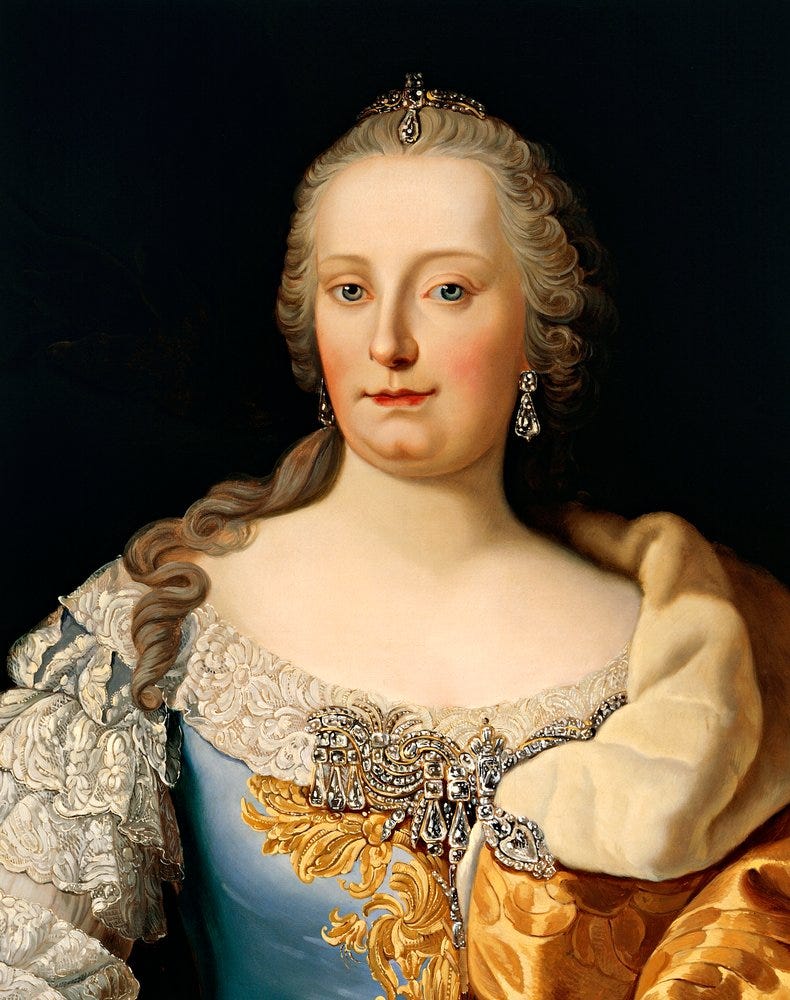
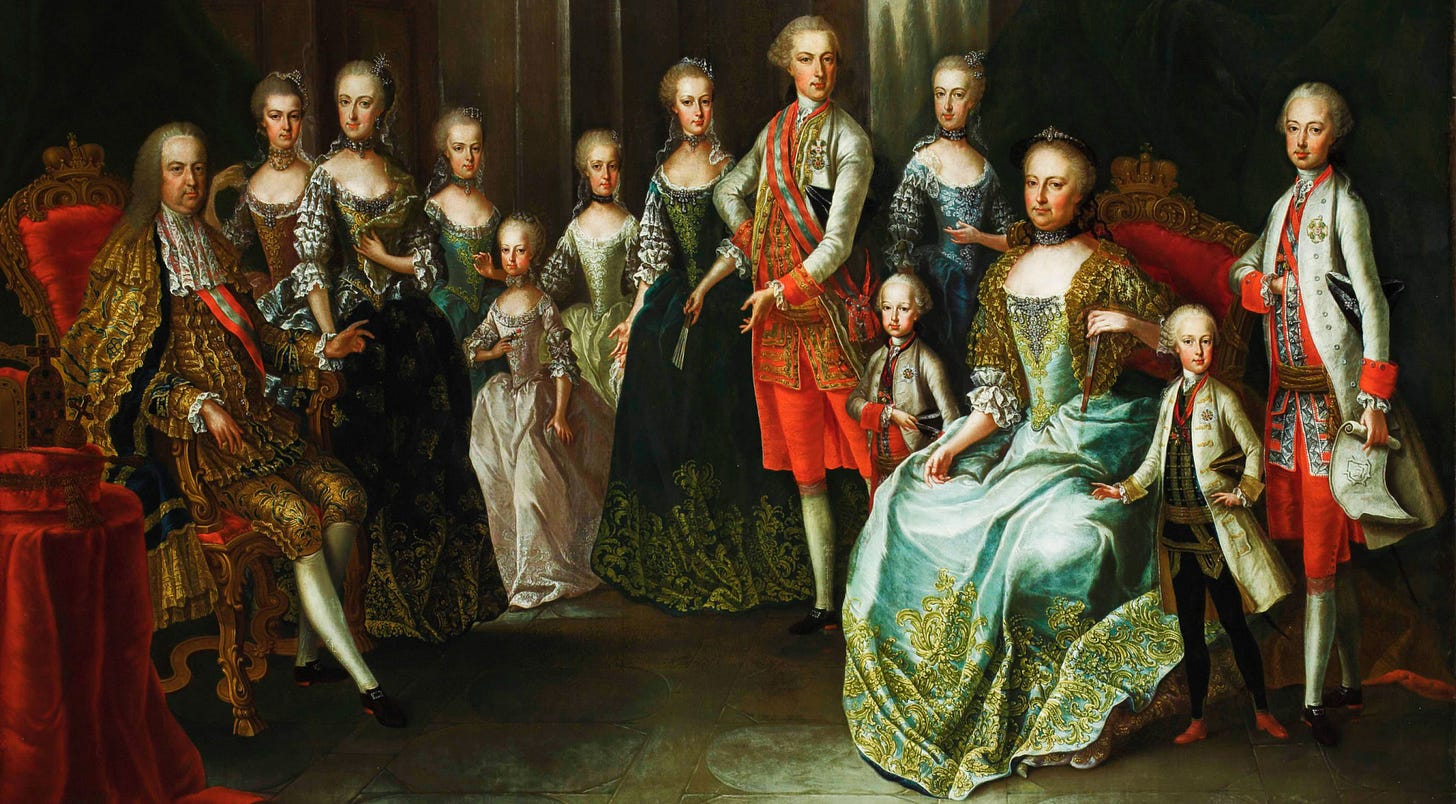
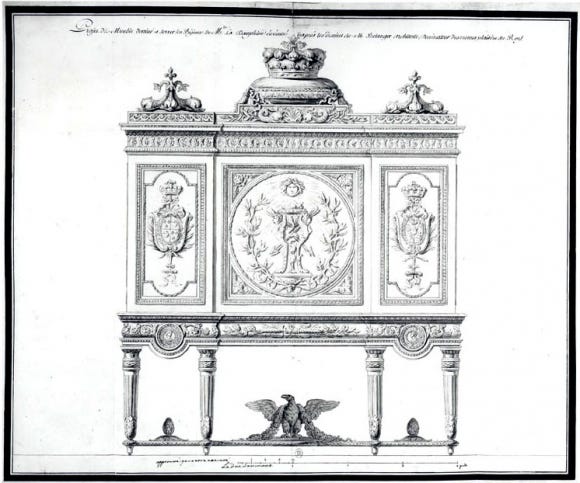
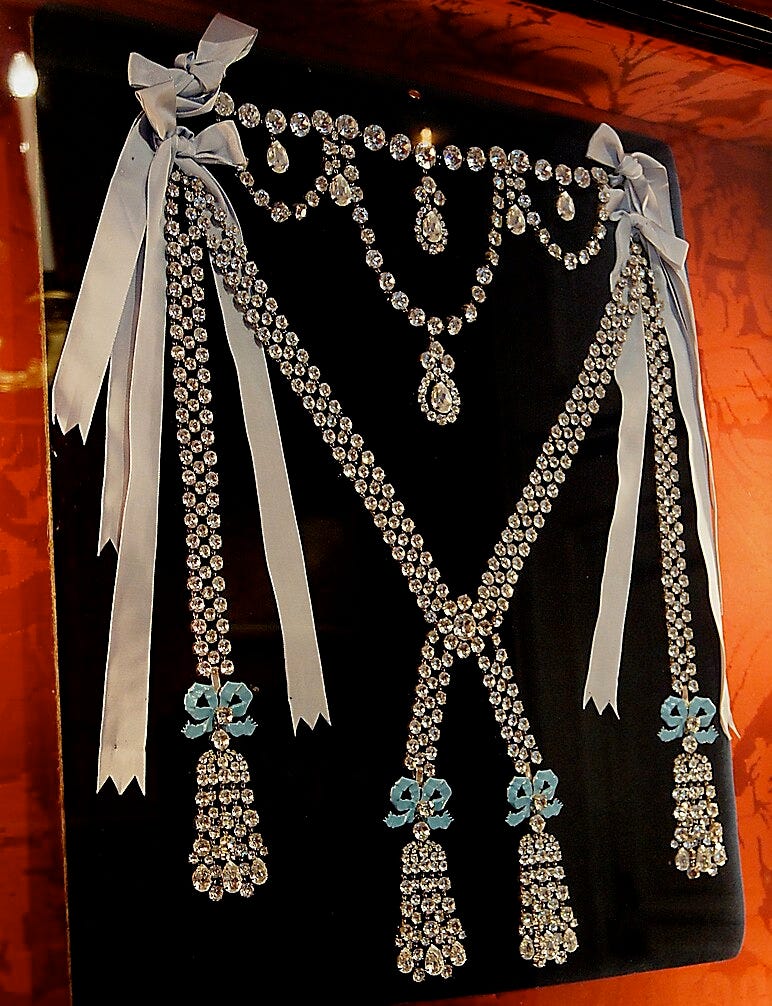
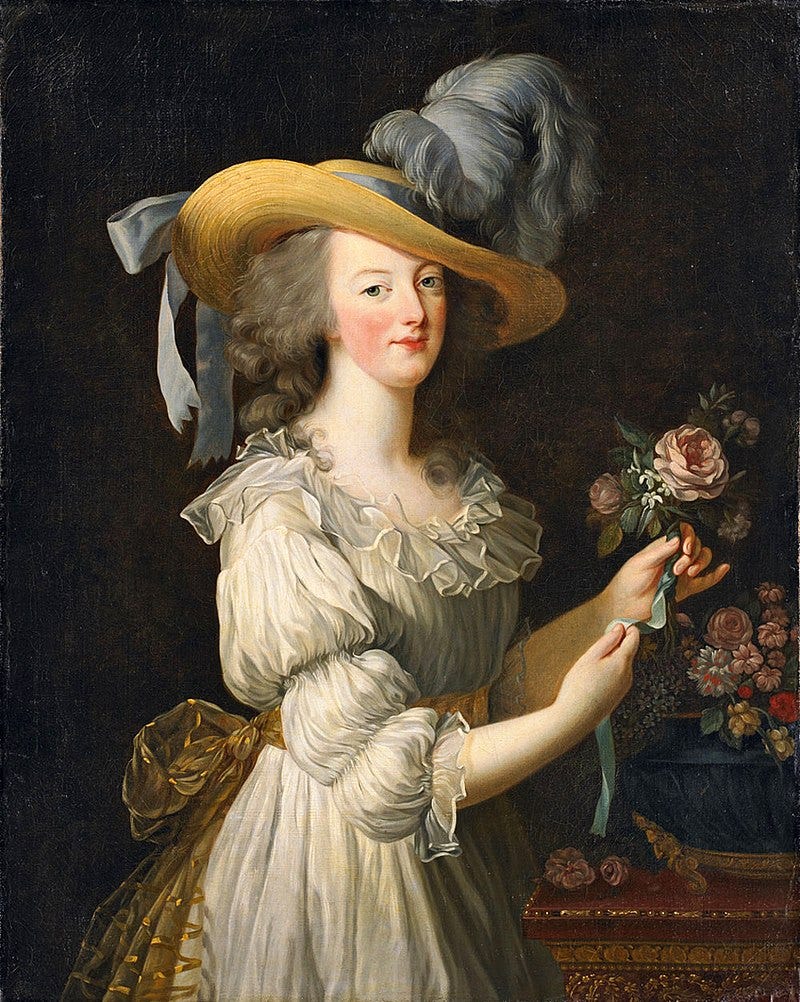
This is brilliantly written! I have such terrible reading stamina but you kept me engrossed till the very end, I didn't know that was possible of me. I appreciate the time and thought you put into this! Brava!
Deserves a lot more engagement. ALGORITHM DONT SLEEP ON THISSSS